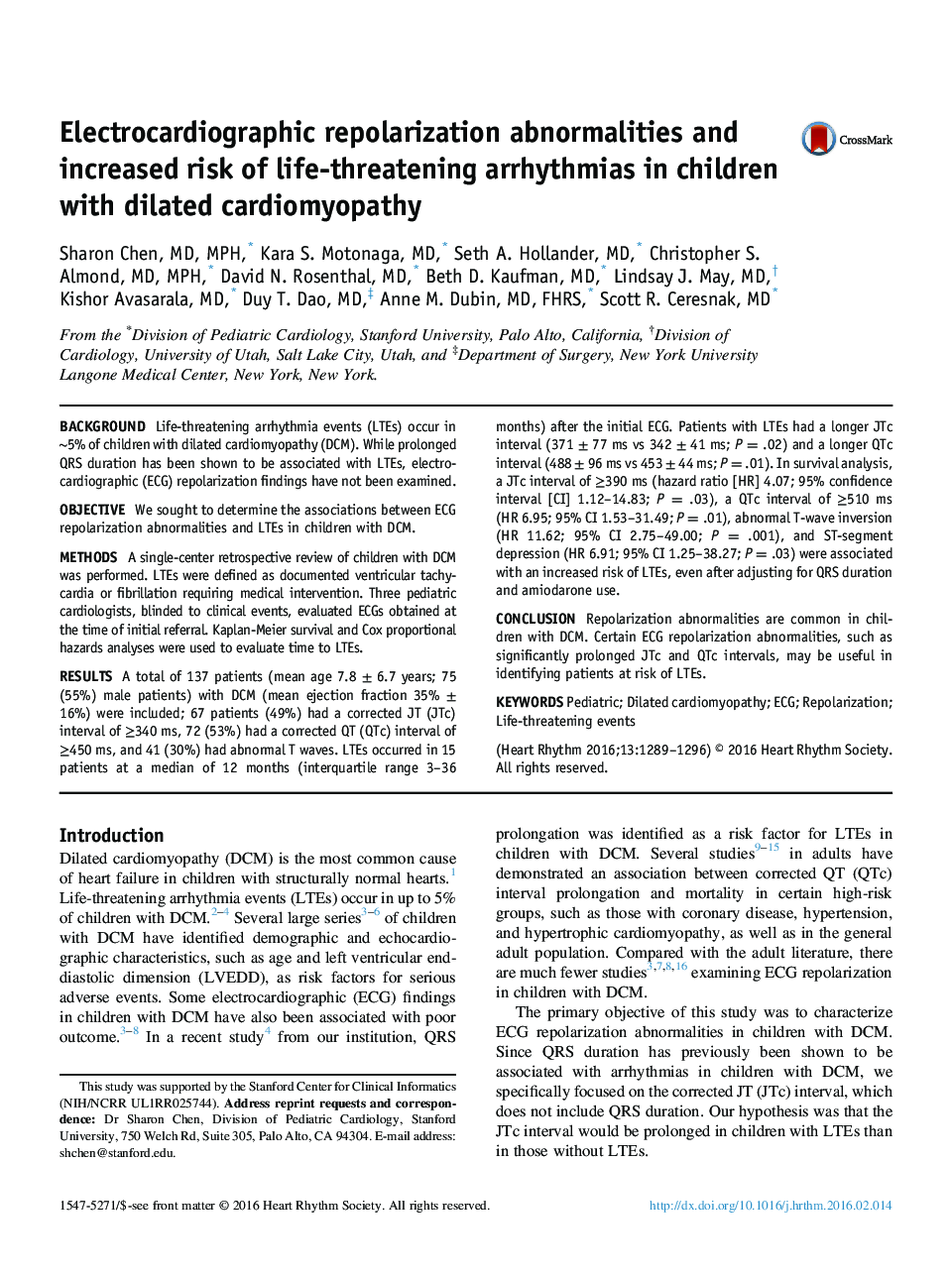| کد مقاله | کد نشریه | سال انتشار | مقاله انگلیسی | نسخه تمام متن |
|---|---|---|---|---|
| 2921714 | 1175800 | 2016 | 8 صفحه PDF | دانلود رایگان |
BackgroundLife-threatening arrhythmia events (LTEs) occur in ~5% of children with dilated cardiomyopathy (DCM). While prolonged QRS duration has been shown to be associated with LTEs, electrocardiographic (ECG) repolarization findings have not been examined.ObjectiveWe sought to determine the associations between ECG repolarization abnormalities and LTEs in children with DCM.MethodsA single-center retrospective review of children with DCM was performed. LTEs were defined as documented ventricular tachycardia or fibrillation requiring medical intervention. Three pediatric cardiologists, blinded to clinical events, evaluated ECGs obtained at the time of initial referral. Kaplan-Meier survival and Cox proportional hazards analyses were used to evaluate time to LTEs.ResultsA total of 137 patients (mean age 7.8 ± 6.7 years; 75(55%) male patients) with DCM (mean ejection fraction 35% ± 16%) were included; 67 patients (49%) had a corrected JT (JTc) interval of ≥340 ms, 72 (53%) had a corrected QT (QTc) interval of ≥450 ms, and 41 (30%) had abnormal T waves. LTEs occurred in 15 patients at a median of 12 months (interquartile range 3–36 months) after the initial ECG. Patients with LTEs had a longer JTc interval (371 ± 77 ms vs 342 ± 41 ms; P = .02) and a longer QTc interval (488 ± 96 ms vs 453 ± 44 ms; P = .01). In survival analysis, a JTc interval of ≥390 ms (hazard ratio [HR] 4.07; 95% confidence interval [CI] 1.12–14.83; P = .03), a QTc interval of ≥510 ms (HR 6.95; 95% CI 1.53–31.49; P = .01), abnormal T-wave inversion (HR 11.62; 95% CI 2.75–49.00; P = .001), and ST-segment depression (HR 6.91; 95% CI 1.25–38.27; P = .03) were associated with an increased risk of LTEs, even after adjusting for QRS duration and amiodarone use.ConclusionRepolarization abnormalities are common in children with DCM. Certain ECG repolarization abnormalities, such as significantly prolonged JTc and QTc intervals, may be useful in identifying patients at risk of LTEs.
Journal: Heart Rhythm - Volume 13, Issue 6, June 2016, Pages 1289–1296
